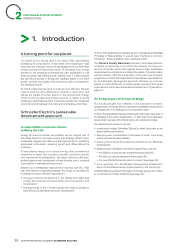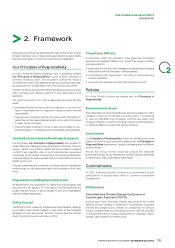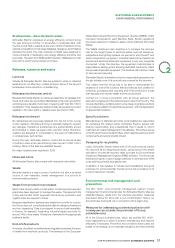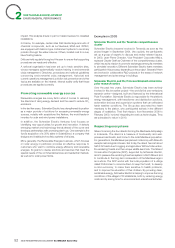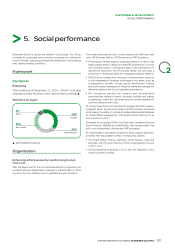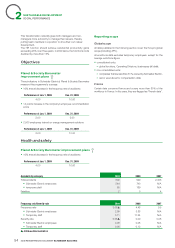APC 2009 Annual Report Download - page 47
Download and view the complete annual report
Please find page 47 of the 2009 APC annual report below. You can navigate through the pages in the report by either clicking on the pages listed below, or by using the keyword search tool below to find specific information within the annual report.
2009 REGISTRATION DOCUMENT SCHNEIDER ELECTRIC 45
SUSTAINABLE DEVELOPMENT
2
ENVIRONMENTAL PERFORMANCE
A responsible corporate citizen
In devising its strategy, Schneider Electric constantly includes
improvement targets for business, social and environmental
performance and sets up indicators to measure its achievements
objectively, as well as areas for further progress. The Group
demonstrates day in, day out, that business, environmental,
societal and social interests all converge.
Action plans to consume less and more effi ciently are challenging
Schneider Electric and its customers to significantly improve
the energy effi ciency of production processes and infrastructure
and, more generally to reduce the environmental impact of CO2
emissions generated by industrial and human activity.
>
4. Environmental performance
Framework
Schneider Electric is the global specialist in energy management.
The Group neither generates nor distributes electricity. It designs
and builds electrical and electronic products and offers integrated
solutions for numerous market segments. The vast majority of
Schneider Electric’s products are installation components that
manage energy used by other devices. These components do
not consume energy directly, and the amount that is dissipated
is negligible compared with the amount that fl ows through them.
Nevertheless, these components play a critical role in the energy
effi ciency of downstream applications.
Schneider Electric’s product development process complies
with IEC 62430 – Environmentally Conscious Design for Electrical
and Electronic Products – and is based on a multi-criteria lifecycle
analysis. The Group has extended its focus on environmental impact
to the entire lineup.
Schneider Electric’s manufacturing operations primarily rely
on assembly and monitoring techniques and include very few
processes with a more signifi cant environmental impact, such as
metal processing and treatment.
At the end of 2009 , 233 ▲ industrial facilities, including plants and
distribution centre s have obtained ISO 14001 certifi cation.
Organisation
The organisation comprises:
•the Sustainable Development Department within the Strategy &
Innovation Department that is responsible for setting the Group’s
environmental objectives and leading the various players involved
in environmental issues;
•an Environmental Affairs Department that handles environmental
management within the Global Supply Chain function and a
separate department that ensures environmental aspects are
taken into account in product design within the Strategy &
Innovation Department ;
•a network of correspondents. These include:
–for site management: the environmental managers in each
major region , environmental managers in large countries with
signifi cant business volume and environmental managers in
each plant or supply chain centre ,
–for product management: environmental relays in each
business who are responsible for integrating environmental
concerns in lineup management, environmental representatives
who are responsible for assessing the impact on marketing
and environmental specialists with expertise in integrating
environmental aspects into product design.
This network has access to a wide range of management and
experience sharing resources including directives, application guides,
an intranet site and databases.
▲ 2009 audited indicators





